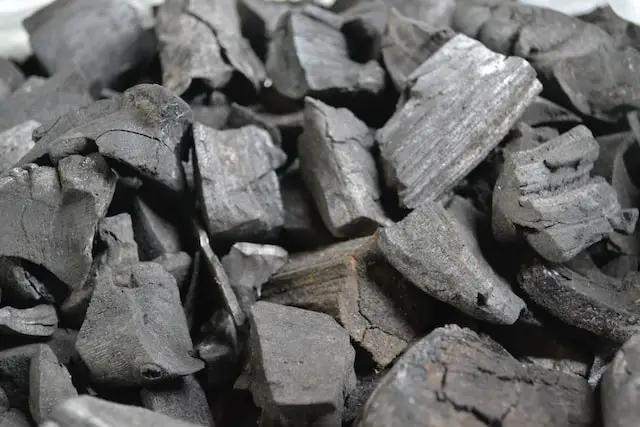
Charcoal filters are very common in households around the world, they’re cheap, effective and require no energy! But what exactly is in a charcoal filter? Can any coal or charcoal be utilized or will only certain forms improve water quality? I looked into this topic a bit further before producing this short article outlining what makes charcoal filters special.
Barbecue charcoal or coal will not filter water in the same manner as a charcoal filter. Charcoal filters utilize ‘activated carbon’, pure carbon with an enlarged surface area which removes microorganisms and other contaminants. Regular charcoal for a bbq or from a fire does not have the same capabilities.
To truly look into this topic we must first define what is charcoal, what isn’t and what is in between! Then the comparisons need to be made as well as an analysis of each material’s effect on water filtration.
Burnt Wood Is Not Charcoal

What is often referred to as charcoal, in the form of burnt wood is not actually charcoal. By definition, charcoal is created by heating organic material without the presence of oxygen. As burnt wood is combusted in the earth’s atmosphere, it is exposed to oxygen which makes the charred residue a mixture of ash and impure charcoal.
Meriam Webster Dictionary (Accessed November 2022)Charcoal
A dark or black porous carbon prepared from vegetable or animal substances (as from wood by charring in a kiln from which air is excluded)
Burnt Wood Is NOT Pure Carbon
The ash/charcoal residue left over after a fire differs from charcoal in its composition. The composition of ash varies greatly depending on plant type and geographic location although according to an in-depth study on the topic in the International Journal of Environmental Science and Technology, wood ash is composed within the ranges cited below:
- Carbon (40.2%–45.8%)
- Hydrogen (3.7%–6.1%)
- Oxygen (46.2%–50.2%)
- Nitrogen (0.12%–0.32%)
- Sulphur (0.11%–0.96%)
In addition to the above-mentioned substances, wood ash can also contain trace amounts of harmful materials like Lead, Cadmium. Zinc, Nickel, Copper, Arsenic, Mercury and Chromium. The harmful materials mentioned along with sulphur can leech into water over time if water is run through regular wood ash/charcoal, this can lead to a reduction in water quality.
Charcoal Briquettes Are Not Pure Carbon

Charcoal Briquettes that you buy at your local store for your barbecue are certainly mostly carbon however they contain many additives and impurities and are simply not pure charcoal. Charcoal briquettes are the fast food of the charcoal world, they are formed from sawdust and sawdust waste wood, and they are fired in the same way as pure charcoal however they often have bonding agents added to ensure they bond into nice briquettes and some even have lighter fuel added to assist in the lighting process. It is no surprise that artificial glues and lighter fuel are not something you want to filter water through, these contaminants drastically reduce water quality and should not be used to filter water under any circumstances!
Lump Charcoal Is Charcoal, But Not Activated!

Lump charcoal refers to pieces of wood that have been fired in a kiln without the presence of oxygen, leaving black natural-looking blocks of charcoal. Of all ‘regular’ charcoal products, lump charcoal is the purest, however, it still differs from carbon filters in that the carbon/charcoal is not ‘activated’. Activated carbon is a form of carbon, usually charcoal that has been treated with a weak acid, base or salt to make it extremely porous. The good thing about pure lump charcoal is that it has a very high purity, lacking the contaminants of ash or briquettes, which means contamination of water is not an issue. Although unable to remove microorganisms like activated carbon, regular pure lump charcoal does still have some useful filtration properties. Lump charcoal is porous enough and its particles fine enough to be utilized as a part of a filtration system to remove microparticles and even some dissolved impurities with water that passes through it. Pure Lump Charcoal will make water clear, but not necessarily drinkable!
Activating Carbon Gives It A HUGE Surface Area

As mentioned above, the difference between pure charcoal and activated charcoal is its porosity. Through activation, carbon becomes much more porous as loose molecules are removed from the charcoal structure leading to a sponge-like structure that has an unfathomably large surface area. To put things into perspective, one gram of activated carbon has over 1000 square metres of surface area! meaning the very structure of the substance is made up of a staggeringly thin network of carbon atoms! This huge surface area enables extremely extensive filtration of water that passes through it, with water passing over an unimaginable amount of surface even in a 10 mm thick filter! As carbon passes through this extensive network of carbon atoms, intermolecular forces attract contaminants including microorganisms and bond with them, removing them from the solution! Carbon also facilitates some reactions like the breakdown of chlorine atoms into chloride ions, removing chlorine from the water. Obviously, the larger surface area gives more of a chance for these reactions to take place, hence activated carbon being much more effective than pure lump charcoal!
https://www.merriam-webster.com/dictionary/charcoal
https://link.springer.com/article/10.1007/s13762-021-03506-9
https://link.springer.com/article/10.1186/2251-6832-3-20#:~:text=The%20composition%20of%20the%20sawdust,%25%20nitrogen%20and%200.302%25%20sulphur.
https://www.sciencedirect.com/topics/pharmacology-toxicology-and-pharmaceutical-science/activated-carbon#:~:text=On%20average%2C%201%20g%20of,square%20meters%20of%20surface%20area.

